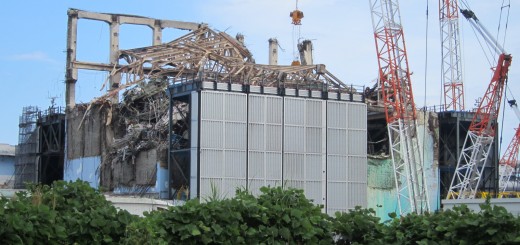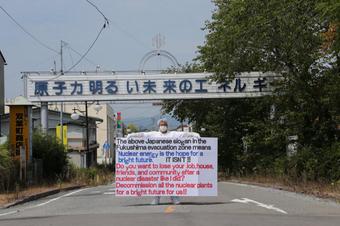CNIC Statement: Nine years since 3.11 – Far away, but very close
March 11, 2020
The anguish of a mother who evacuated to Niigata, fleeing the nuclear accident with her two children, a one-year-old and a three-year-old, comes across clearly. The elder child is now about to enter middle school and does not want to be separated from all the friends he has made. But his mother wants to return to her home. “Whatever we children say, our family is going back to our old town, right?” The boy’s words reveal his complex and ambivalent feelings.
In Fukushima Prefecture, the whole 20.8-kilometer section of the Joban railway line running from Tomioka through Yo no Mori, Ono and Futaba to Namie will be reopened for the first time in nine years on March 14. In the tenth year after the disaster, the evacuation order for a part of the hard-to-return zone will be rescinded. However, in responses to a questionnaire 64% of 1,399 former households of Futaba Town, which was totally evacuated, said that they “had decided not to return,” 24% replied that they were “unable to decide,” and 11% replied that they “wanted to return.” For Okuma Town and Tomioka Town, where the evacuation order has been partially rescinded, 60% and 49%, respectively, said they “would not return.” Around 2% of the households of Okuma Town and 7% of the households of Tomioka Town have already returned (Prefecture and Three-Town Joint Survey, August to November 2019).
When ten years have passed, a three-year-old will become a middle school student and it also becomes possible to see the shape of the so-called “restoration.” The appearance of the F1 plant (the Fukushima Daiichi Nuclear Power Station) has changed. Public opinion has also undergone a slight change. However, what never changes, whether it be ten years or one day, is that our lives depend on the safety of the air, the water, the land and food. Since 3.11, the safety of these essential elements has been lost. Despite this, there are people who insist that things are “scientifically safe” and proclaim the onward thrust of the Fukushima recovery under the flag of the Olympic and Paralympic Games.
There is no shortage of intractable problems: Disposal of the ever-increasing amounts of radioactive contaminated water, reuse of radioactive contaminated soil, the apparent large numbers of thyroid cancers, the unknown road to decommissioning, the IRCP’s new draft recommendation, etc. etc. What is conspicuous is the attempt to persuade citizens in the name of science.
“The exposure dose is small. It’s scientifically safe,” is what they say, but is it really so? In the first place, is the data they are using as evidence really trustworthy? Are the conditions sufficiently understood for the data to have any meaning? In nature, as opposed to a laboratory, realities are complex and cannot be controlled. In some cases, there is no option but to rely on epidemiological surveys to show causality. These processes will necessarily exclude some people.
For us who live in contemporary society, we have to bear in mind the essential ambiguity inherent in science. When there is a difference of opinion in science and technology, going along with the most critical and pessimistic opinion should be our basic stance. If we do not, the average person’s “right to maintain the minimum standards of wholesome and cultured living” (Article 25 of the Constitution of Japan) is very likely to be violated in the name of high-level science and technology.
While engraving on our hearts the sorrow of losing so many people, I hope we will go forward with a strong determination that these mistakes will never be repeated again.


